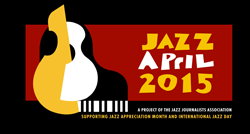Colleges are among the major supporters of jazz across the country, not just because there are many schools now where musicians can study jazz. Major, and not-so-major, jazz musicians supplement their income teaching. But colleges are also routine sites for jazz concerts--good gigs. And very often when someone comes to play, they put on some kind of clinic or workshop for musicians.
Those can be as valuable to the musicians in school as the courses they’re taking.
Once upon a time, jam sessions abounded for musicians. They cut their teeth and learned there. They got their asses kicked and walked out with their tails between their legs too. But that was also learning. Rebounding from that was important. That’s almost gone these days. But encounters with musicians in workshops brings an added value to their education.
Recently, in conversations with trumpeter Ambrose Akinmusire and drummer Eric Harland, both mentioned how musicians came to their college or high school brought valuable information about the music. Of course, they’re not alone. Many others have told me how much THEY learn when they teach. Give and take. Very cool.
So last week (April 1), I got the opportunity to sit in on a workshop at Skidmore College in Saratoga Springs, NY, given by some first-rate jazz folks. It was a great experience for me, let along the young musicians in the audience. I was there to shoot video for the eyeJazz program of the Jazz Journalists Association (subject for a future blog) and am in the process of producing a short video of the session. But there was so much that won’t get covered.
Involved was John Medeski of the world renowned Medeski, Martin & Wood band. He was in town to do a concert at the college with his former teacher, Albany, NY, jazz pianist Lee Shaw and her fine trio: the wonderful bassist Rich Syracuse and stellar drummer Jeff Siegel. All four cats had words of wisdom for the students.
It was their enthusiasm and genuine caring that stood out most for me. They met in the lobby, each one trickling in separately, and talked on the fly about how they would approach it. Just like good jazz, made up on the spot.
Then they took it to the kids and handled it with great flair. They spoke about communication, listening, persevering. They addressed being critical. And being free. And the points were peppered by Syracuse and Medeski with amusing anecdotes that had purpose behind them. They listened to students play and gave constructive criticism. Shaw played with a student trio. Medeski, Syracuse and Siegel performed an original written by a young pianist in attendance. They’d played never seen the music before, naturally. A few minutes earlier the young man and two or his classmates played the piece. And very nicely. But the pros brought it to a new level, off the cuff, before the enthralled group.
The point here isn’t to rehash the educational tidbits. Just to relate how uplifting the session was and the sincerity of each instructor. Passing it on. That’s always been key to jazz and blues, which are at the root of it all. The methods might be different -- classrooms compared to jam sessions or after-hours assemblies -- but the feeling is the same. Learn. Grow. Don’t be afraid to put yourself out there.
As Syracuse opined, “Be fearless.” Medeski said as a youngster he experienced “certain realizations … things that people told me that changed my perspective and enabled me to grow faster and be more familiar with my own style, my own voice. All those things are important to share, to help people find that. It’s real easy to get on the wrong track.”
Nice when veterans like this can take the time and help others with such things. And it’s nice that a lot of jazz musicians seem to do it regularly.
Subscribe to:
Post Comments (Atom)






No comments:
Post a Comment